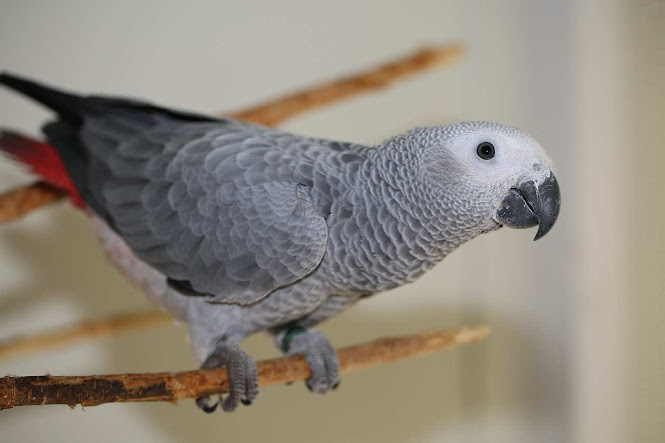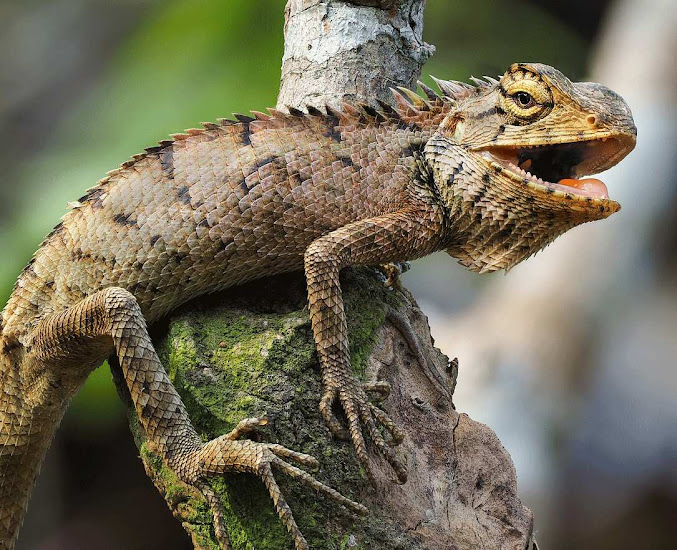African Grey parrrot
About African Grey parrrot
The African grey parrot's capacity to talk and copy sounds
makes this medium-sized parrot a charming buddy. African dim proprietors
frequently report that their grays regularly talk in settings and appear to be
exceptionally sensitive to their kin's feelings. The African dark parrot isn't
simply a top talker — this bird is likewise known for its outrageous knowledge,
which gives them the moniker "The Einsteins of the Bird World."
|
Variety Size Lifespan Sounds Association |
|
Dark medium 30 + years Vocal communicator Exceptionally social |
The African dark parrot is one of the most gifted talking/emulating birds in the world, giving it all in all a standing among bird enthusiasts. Not in the least bird keepers love this savvy bird, it's one of the most conspicuous species to bird novices as well — everybody knows the African dim parrot. This parrot is one of the oldest psittacine species kept by humans, with records of the bird tracing all the way back to scriptural times. Understated excellence and a smart straightforward demeanor keep this parrot at the pinnacle of notoriety.
At first look, the African dark is a medium-sized, dusty-looking dim bird, almost pigeon-like — yet further investigation reveals a radiant red tail, insightful orange eyes, and a stunning scalloped example of its plumage.
Native Region/Normal Natural Habitat
African dark parrots for the most part possess savannas, coastal mangroves, forests, and edges of forest clearings in their West and Focal Africa range. However the bigger of the African dark subspecies is alluded to as the Congo African dim, this bird really has a lot more extensive normal reach in Africa, including the southeastern Ivory Coast, Kenya, and Tanzania. The Timneh African dark is found in a smaller locale along the western edge of the Ivory Coast and through southern Guinea. Their eating regimen in the wild consists mostly of palm nuts, seeds, fruits, and verdant matter.
How to take care of the African Grey parrot
There's a reason why the African dim is much of the time considered the poster bird for parrot insight — besides the fact that this bird leaned to amass a huge jargon, African grays also demonstrate fitness for perceiving the significance of words and phrases.
African grays need a lot of toys that challenge their insight, such as scavenging and puzzle toys. Nutri-Berries by Lafeber Organization are ideally suited for scavenging. This total food blends an equilibrium of grains, seeds, and other nutrients in the shape of a berry. Because the grains and seeds are mostly entire and framed into a berry shape, it encourages African grays to hold, snack, and even play with the Nutri-Berries. This mimics the searching that African grays do in nature.
African grays seem especially impacted by stress and disturbance in their current circumstance and can be reassured more by setting one corner of the enclosure against a wall as opposed to in a room.
African dim parrots are more inclined to lack vitamin-A/beta-carotene and therefore benefit from eating vegetables high in beta-carotene, such as cooked sweet potato and fresh kale. Vitamin-D lack is another worry, especially for grays on a less-than-stellar eating routine. Offering a fair, pelleted diet, such as Nutri-Berries, for the fundamental eating routine of an African dim helps forestall nutrient and mineral deficiencies. A dim that consumes a pelleted diet, by and large, does not require nutrient supplements added to its food.
Personality and Conduct
Most bird keepers accept that main an accomplished bird enthusiast should keep dim. They are complicated parrots, exceptionally sensitive, and all-around requesting. They are also beguiling and splendid, yet this match of sensitivity and brains can prompt conduct issues. They are creatures of propensity, and, surprisingly, a small change in routine can make a sensitive dark troubled. They are inclined to cull and bite their feathers, among other vices. Narratively, the TAG has a hardier mentality and might be better for households with many individuals traveling every which way. The CAG prefers somewhat less chaos.
African grays are social parrots that need a ton of hands-on time, in any case, they aren't "cuddle bugs." They will endure some head scratching and a tad of petting, yet they don't see the value in intense physical contact, however, some individuals wouldn't fret a little snuggling. Each bird has individual tastes and preferences. A dim can also turn into a "one-person bird," regardless of whether each individual from the household socializes with it all along.
Sound and talking
A large part of the dark's allure comes from its ability to talk. It is among the best talkers in the parrot family, ready to rehash words and phrases subsequent to hearing them just more than once. This bird reaches its full ability to talk close to an extended period old enough, and most individuals become competent mimics a whole lot sooner.
Not exclusively will a dim foster outstanding jargon, but research has shown that this species can come to understand what it's talking about. The most famous CAG, Alex, and his partner, Dr. Irene Pepperberg, might be the reason for the fame of this species, and positively for its prominence. Alex and Dr. Pepperberg cooperated for quite a long time at Brandeis University until his sad demise in 2007, because of a catastrophic occasion associated with arteriosclerosis ("solidifying of the arteries"). In their three decades of research, Dr. Pepperberg trained Alex to perceive and distinguish objects, colors, and shapes. Alex could also understand the concepts of same and unique, class, and might really count objects. However, Alex was headed to significantly more mind-boggling manners of thinking, including how to peruse, his kindred African grays Griffin and Arthur (Otherwise known as "Mole") are proceeding to work with Dr. Pepperberg attempting to arrive at the point that Alex had reached and, surprisingly, further.
In any case, just because grays are smart and may choose to talk rather than scream, it's a mistake to accept that they aren't noisy. They aren't as clear or persistent as some of the South American species, however, they will learn household sounds and use them tirelessly to the dismay of guardians. Envision the microwave signaling incessantly, or a cellphone ringing frantically without the advantage of switching it off.
Wellbeing and Normal Conditions
African grays are especially susceptible to feather picking, calcium lack, vitamin-An and vitamin-D inadequacy, respiratory contamination, psittacosis, and psittacine mouth and feather disease (PBFD).
Get an African Dim Parrot
There are two distinct subspecies of the African dim parrot: the Congo African dark (Psittacus erithacus), also called the red-followed dim and the CAG, and the Timneh African dim (Psittacus erithacus timneh), or TAG. Frequently the enormous Congo grays were "Cameroons" because they were once remembered to be a subspecies from that area, however, in truth, the bigger birds were smuggled into Cameroon and had that nation listed on their product papers. These birds will generally arrive in various sizes and shades of the dark because their regular environment is so huge. Be that as it may, the CAG, regardless of the variety or size, is still the same subspecies.
The CAG is the more well-known of the two subspecies, being bigger and having a scarlet tail and dark nose. The TAG is smaller with a lot more obscure dim body, almost dark, with a horn-hued bill, and its tail ranges in variety from maroon to dull dim, or dark. The two birds make similarly fine companions.
African dim parrots are bound to be accessible in avian-specialty stores or from a bird raiser. African grays are also sometimes accessible for reception from bird rescue/reception organizations.
African Gray Parrot Fun Facts
· The African dim parrot is monogamous, nesting solitarily in a tree with an opening for her eggs.
· One defense mechanism is cushioning up to look bigger and gnawing.
· The African dim is considered to be quite possibly of the most accomplished impersonate. Parrots, when raised by humans, show an astounding skill to impersonate individuals and noisy objects, yet in the wild, they have never been observed mirroring.
· These parrots have a long lifespan and can outlast their human owners.


.jpg)
.jpg)
.jpg)
.jpg)
.jpg)
.jpg)
.jpg)
.jpg)
.jpg)




